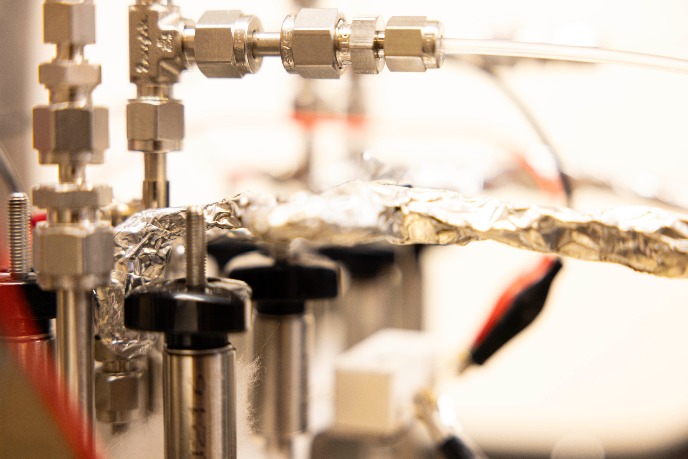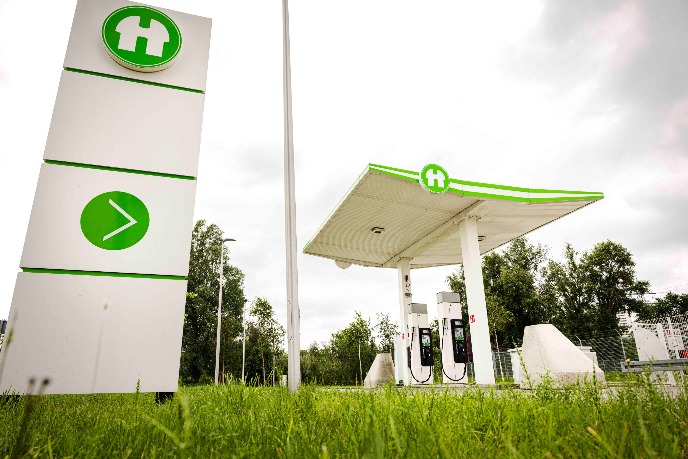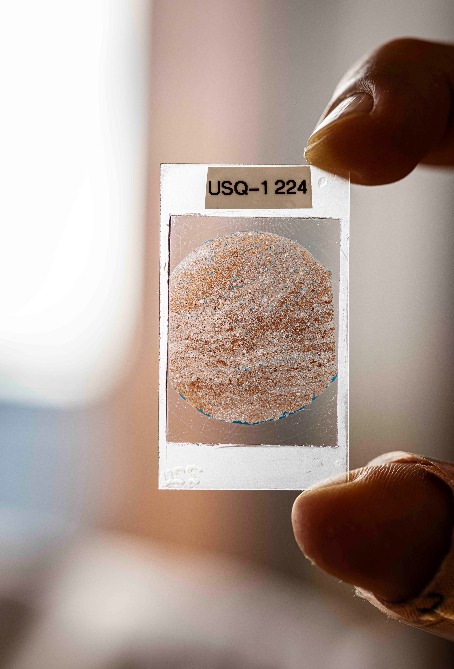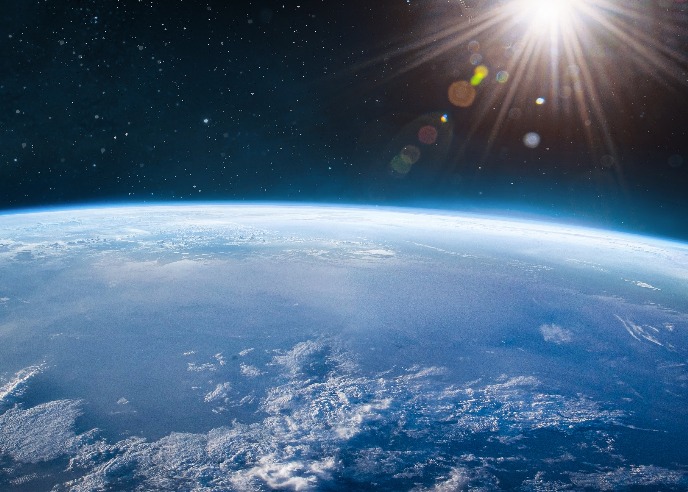We are betting the bank on hydrogen. But are we ready for it?

Green hydrogen holds many promises: it can serve as a ‘battery’ for energy storage, it can be used in the chemical industry, and its only emission will be water vapour. But, unfortunately, green hydrogen is not yet widely used, because the production of grey hydrogen from natural gas is much cheaper. Moreover, it’s not trivial how we could store hydrogen and as an indirect greenhouse gas, hydrogen is not as clean as it looks. Consequently, researchers of the University of Groningen have a lot of work to do.
FSE Science Newsroom | Charlotte Vlek
Hydrogen is the smallest, simplest element that was at the beginning of all other things. Just after the Big Bang, the universe was shrouded in a mist of hydrogen, and this oldest element is still all around us: in water (H2O), natural gas (with main component methane CH4), and ammonia (NH3), to name a few.
On its own, hydrogen hardly exists in nature: it is almost always bonded to something else. But it is possible to separate hydrogen from other elements and make it form a molecule of its own (H2). To make this happen, you need to add some energy. When the hydrogen molecule is allowed to bond again, this energy will be released, though with some energy loss.
Making green hydrogen cheaper

Now, the idea is that if you split water into hydrogen and oxygen molecules, using energy from renewable sources, the result would be a ‘green battery’. When the sun is shining or the wind is blowing, you can use the excess power supply of solar panels and wind turbines to make hydrogen. Allowing hydrogen to bond with oxygen again results in the production of water and the release of energy.
But currently, the cheapest available option is so-called grey hydrogen, obtained from natural gas, with carbon dioxide (CO2) as a by-product. The reason is simple: Hydrogen from water is currently about five times more expensive than hydrogen made from other elements.
That is why researchers from the University of Groningen are working on the efficient and affordable production of hydrogen made from water.

Because hydrogen likes to bond to other elements, there are many more applications besides the 'green battery': think of farmers spreading fertilizer (based on ammonia (NH3)) on their land, or hairdressers bleaching hair with hydrogen peroxide (H2O2). But a car can also run on hydrogen, and did you know that hydrogen can be obtained from human faeces?
Researchers from the UG are working applications of hydrogen in various ways, such as in transportation and in chemical industry.

Once we have determined how to produce cheap, efficient, green hydrogen, it needs to be stored somewhere, or transported to the place where it is needed. Would it not be convenient if hydrogen gas could simply be transported and stored like natural gas is now? We'd just transport it through our existing pipe lines and store it in empty gas fields underground.
Unfortunately, this is easier said than done. Hydrogen is the smallest element there is and the hydrogen molecule (H2) is much smaller than natural gas. If we were to transport hydrogen through our existing pipe lines, it would possibly escape through tiny cracks. What’s even worse, it can affect other materials, making metal of pipelines and storage tanks as brittle as glass, such that it can easily shatter into pieces.
That is why UG researchers will also investigate what happens to the materials that may be used for storing and transporting hydrogen.

Then, there is one question that remains: even though we call it green, is hydrogen really green? Hydrogen from water made with renewable energy sounds wonderful, as well as the emission of only clear water vapour when hydrogen is used in applications. Nonetheless, it is important to monitor what will happen in the atmosphere when hydrogen escapes through cracks.
Hydrogen is an indirect greenhouse gas, which means that on its own, it does no harm, but through reactions that take place in the atmosphere, it does. Specifically, these reactions lead to more methane, ozone and water vapour high up in the atmosphere, which all result in global warming.
For now, it is not really a problem if small amounts of hydrogen leak into the atmosphere. But what if we fully focus on hydrogen as a green solution for the future? Then, it will be very important that we monitor and understand what happens to hydrogen in the atmosphere, because of its potential climate impact.
That is why UG researchers measure where and how much hydrogen leaks into the atmosphere, and what effect that has.
The Northern Netherlands are the Hydrogen Valley Campus Europe . Here, we have years of experience with natural gas, it’s also the place where green energy comes ashore (from wind turbines in the North Sea), and where universities, universities of applied sciences and vocational schools are working on new research and on teaching the next generation of engineers for the hydrogen economy of the future. This article marks the start of a series on hydrogen research at the Faculty of Science and Engineering of the University of Groningen.
Read everything here:
| Published on: | 18 June 2024 |
Hydrogen is an indirect greenhouse gas: by reacting with other compounds in the atmosphere, it may contribute to global warming in several ways.
| Published on: | 11 June 2024 |
Because hydrogen is a much smaller molecule than natural gas, it can easily leak. Even worse, despite its small size, hydrogen can affect larger materials and make them as brittle as glass.
| Published on: | 04 June 2024 |
Professor of Energy Conversion Aravind Purushothaman Vellayani is working on systems that use hydrogen to produce electricity – for large factories, for instance. But even your car or your toilet could be capable of producing electricity from hydrogen.
| Published on: | 30 May 2024 |
A sustainable way to produce hydrogen has been around for a century, but it is still much cheaper to make hydrogen from natural gas. Researchers from the UG are working on more efficient, affordable, and scalable production of green hydrogen.
| Last modified: | 07 February 2025 12.36 p.m. |
More news
-
03 April 2025
IMChip and MimeCure in top 10 of the national Academic Startup Competition
Prof. Tamalika Banerjee’s startup IMChip and Prof. Erik Frijlink and Dr. Luke van der Koog’s startup MimeCure have made it into the top 10 of the national Academic Startup Competition.
-
01 April 2025
NSC’s electoral reform plan may have unwanted consequences
The new voting system, proposed by minister Uitermark, could jeopardize the fundamental principle of proportional representation, says Davide Grossi, Professor of Collective Decision Making and Computation at the University of Groningen
-
01 April 2025
'Diversity leads to better science'
In addition to her biological research on ageing, Hannah Dugdale also studies disparities relating to diversity in science. Thanks to the latter, she is one of the two 2024 laureates of the Athena Award, an NWO prize for successful and inspiring...
